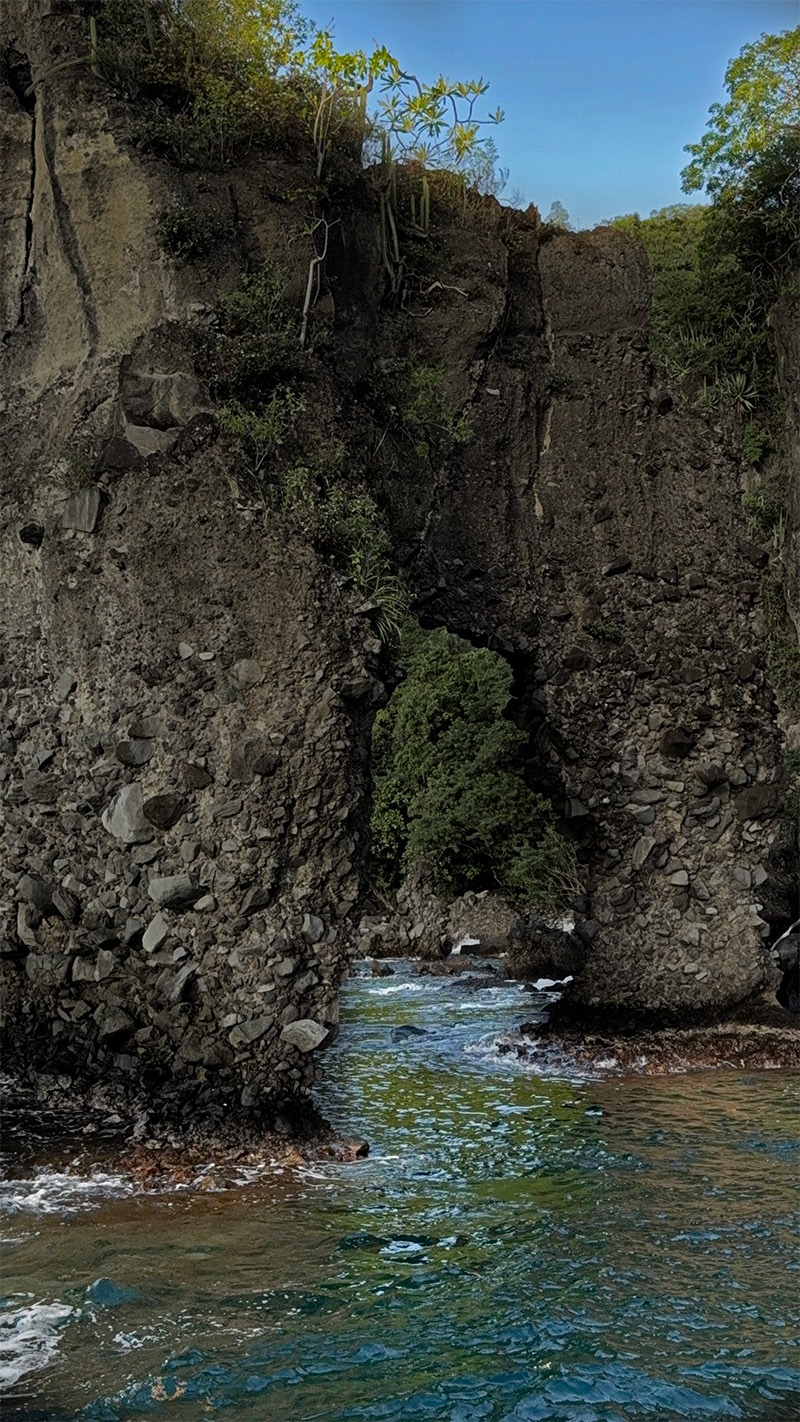It’s a silly title, I know (for good reason, you’ll see below). Recently, five radio stations went to Saint Vincent and The Grenadines with the aim of promoting and giving away a holiday to four lucky listeners. Presenters and producers from each station got to experience the resort first hand and broadcast their experience on-air throughout the week and this is how Cleanfeed was used to professionally broadcast live, from this exotic location!
The plan
The first order of business was ensuring who was broadcasting what. Was everyone live? Were some pre-recording? There were five broadcasters, kmfm, Nation Radio South, Radio Exe (Devon), Isle of Wight Radio and More Radio, it turned out that Isle of Wight Radio and More Radio shared the same presenter for their drive show and so only four stations needed to be set up, technically.
With four broadcasters, I had to source a single mixer which was capable of delivering rock-solid performance and reliability to manage all stations from one location. With these broadcasts, the key was ensuring every station had a technical setup to make them sound great, without worrying about a thing.
As its core the requirement for each station was:
- Two microphones: Dynamic mics, so that voice pickup was minimal (to avoid spill) – (RØDE PodMic).
- Stereo headphone amplifier – (ART Headamp 4).
- A station laptop to record and playback audio locally using Dante Virtual Soundcard.
- A mute button (of some kind) — see below!
- A central laptop (mine) to handle all the Cleanfeed connections back to the stations broadcasting live.
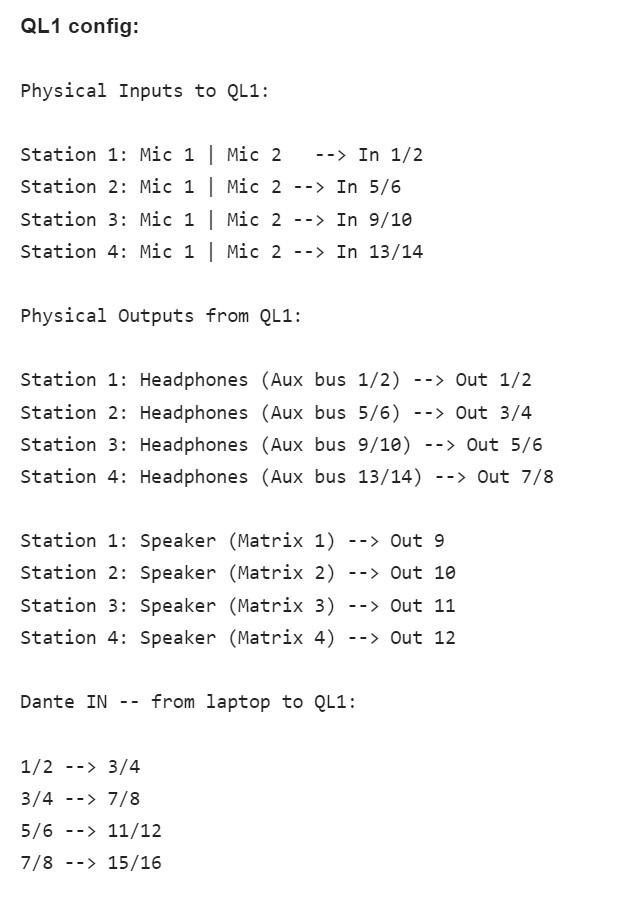
This meant I had to consider a mixer which was Dante capable that had 16 mix-busses and some further matrix mixes for foldback speakers. 16 mix buses (mono) translated to: 4x headphone feeds and 4x return feeds (mix-minus) to the stations and those doing voice tracking.
This requirement led me to the Yamaha QL1, which completely met the requirement and was readily available via a local hire company IMP (thanks Phil).
The QL1 has 32 faders (via two banks). 32 balanced inputs (for XLR microphones), 16 mix-busses and also 8 matrix mixes. An expansion card in ‘slot 1’ gave me more outputs for foldback speakers, from the matrix outputs.
Why not smaller local setups? There was an argument to take smaller interfaces for each radio station and just connect them to their laptops. However, having smaller devices meant that it may have been harder to source rental of those devices. It would have also demanded more hands-on support if anything went wrong. Having one support engineer (me) running around to each broadcaster would have been tricky. A large format console, like the QL1, gave me the reassurance, processing and workflow I required to ensure every station sounded great on the air and monitored from a single location.
Mute buttons
One of the core requirements was a way in which presenters could mute their microphones by themselves, without my intervention (that would have been weird).
It was possible to put various inputs into something called ‘mute groups’. A mute group, in this case, would have consisted of the two microphones for each broadcaster — a total of 4x mute groups.
The Yamaha QL1 has the ability to connect to a network or use MIDI to control mute groups. But by far the most ergonomic and practical way of controlling mute groups was via old-fashioned GPI/O interfacing.
This console supports a DB15 (D-sub 15-pin) GPI/O interface which gave me up to 5x inputs and 5x outputs to interface with and program accordingly. This meant I could create some simple buttons, with a ‘mic live lamp’ with a red LED strip at the top when the mics were live.
Without getting into too much detail, I crafted a GPI/O breakout box to ethernet and then four button packs. Each one had a local 12v PSU for a bright LED strip with ethernet input from the breakout box, which lived near the QL1 console.


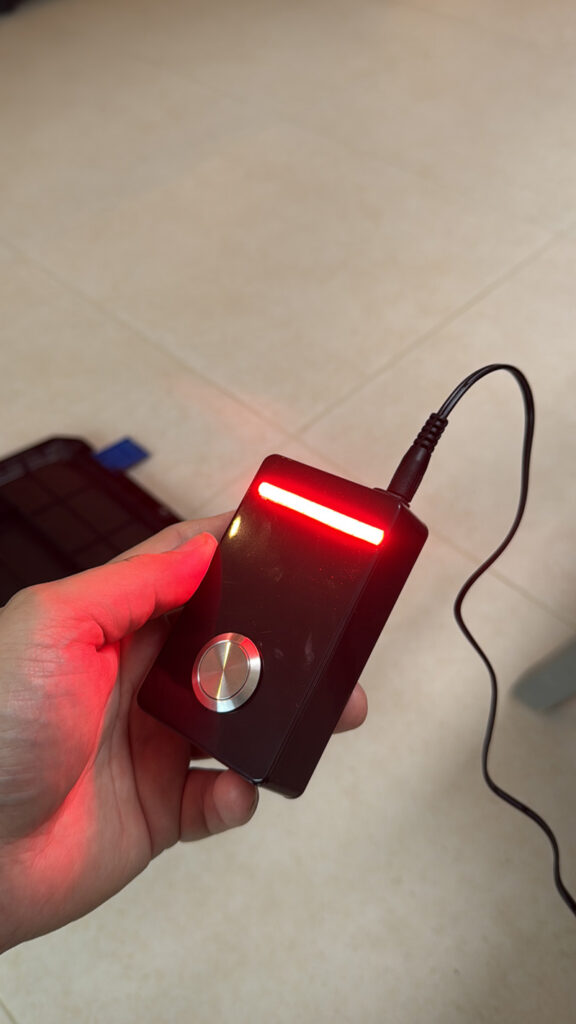
Testing & programming
We weren’t just going to rock up on-location and hope for the best. As any live audio engineer will tell you, spend as much time building the show before hand for a seamless experience on-site!
This meant spending a day testing all the equipment and programming the desk. Checking cables, GPI/O logic, patching etc. all before packing it up before heading out. Here are some ‘in progress’ shots of that process. This was done at kmfm HQ.
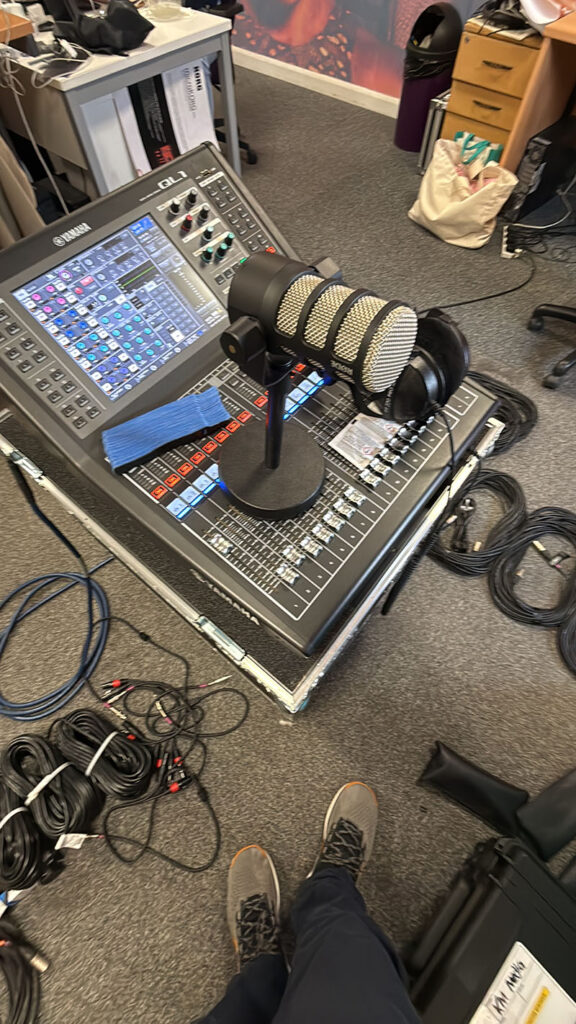

Logistics and 32kg
32kg was the maximum weight limit set by the airline company for checked-in luggage. To avoid sending freight with a handler and all the headaches involved, the aim was to take the whole setup in multiple 32kg bags between some of the crew heading out.
Luckily we managed to get the Yamaha QL1 in a flight case which weighed 31kg. A bag of multiple lengths of XLR cables was able to fit into another 32kg bag. Two switches, some genelec speakers and 8x microphones in another. Then a supplementary 23kg bag with the rest of the ethernet cabling, power distribution, GPI/O buttons/breakout, tooling and headphone amps.
Oh, and there were a few hoops to jump through with HM Revenue & Customs. In this case a system of ‘duplicate lists‘ was necessary. Oh and did I mention there was a hurricane, Melissa, 1800km away in Jamaica?


Take off… and hello Barbados?
Yup, Virgin Atlantic VS197 (from Heathrow Terminal 3) is a flight to Saint Vincent and The Grenadines via Barbados. Except you get to stay on-board while some of the passengers disembark and others get on. You also get to experience a crew change-over. Being in the Caribbean also meant a spot of tropical rain while we waited as well.
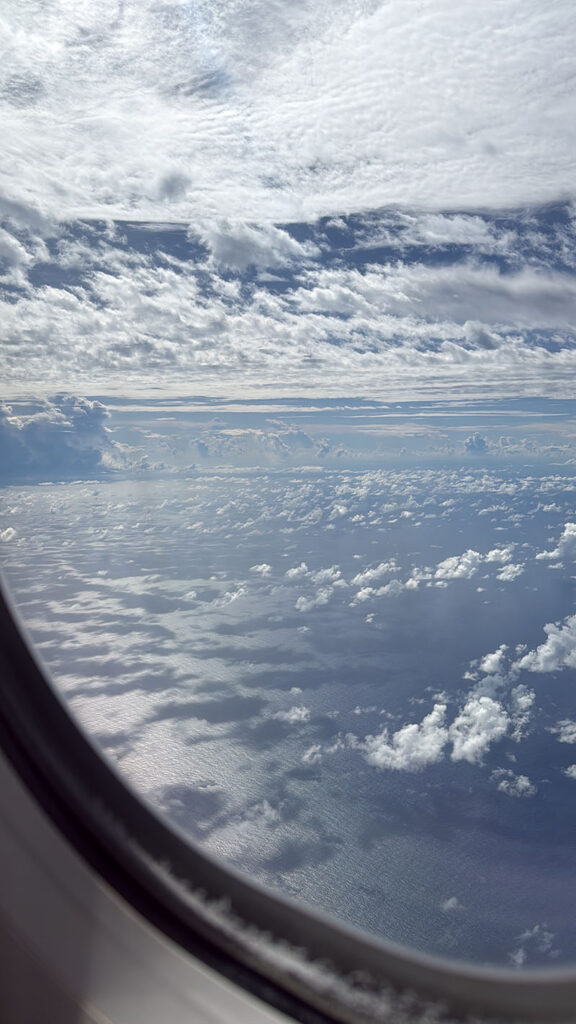
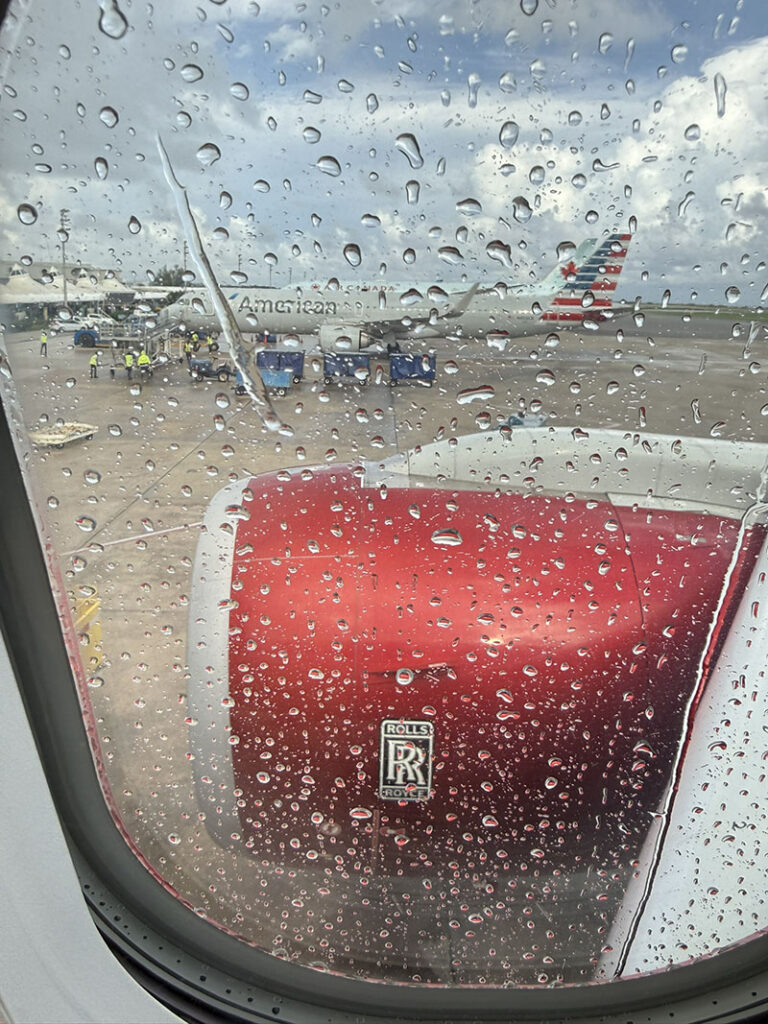
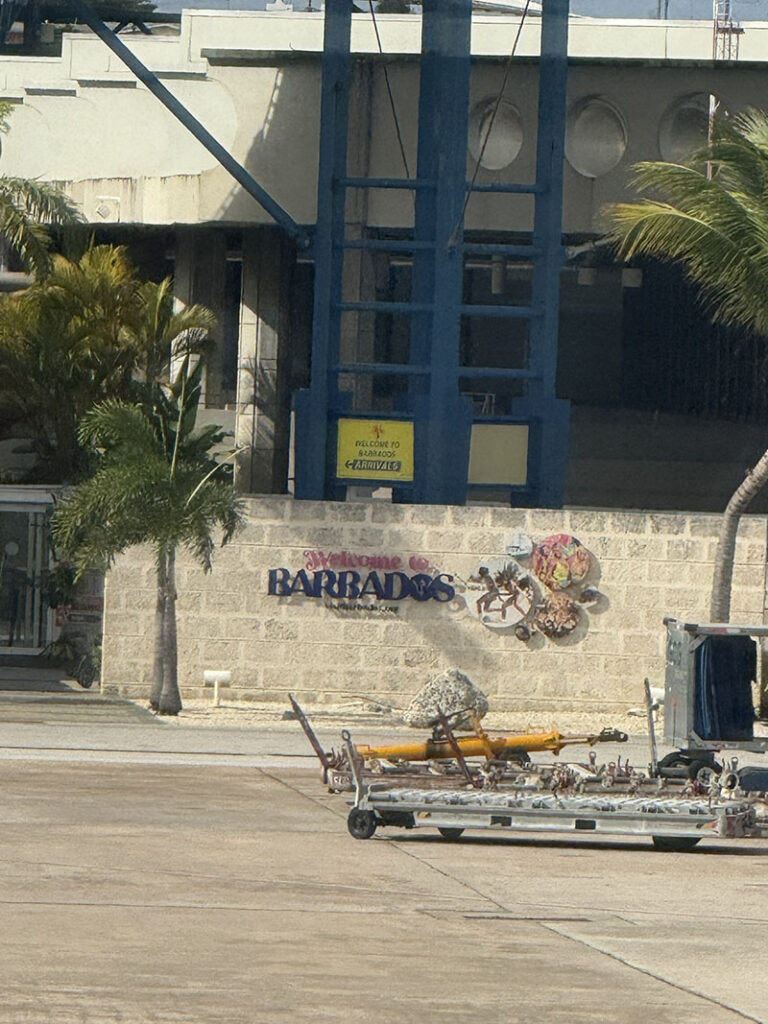
Finally, after about one and a half hours, it was time for the final leg of VS197. Less than 30 minutes from Barbados to Saint Vincent and The Grenadines. I’m convinced this may be the shortest flight by an Airbus A330-941? Worried about the short runway? Not an issue with an aircraft which had less than half the number of passengers and freight. The runway measuring 2,743 meters (9,003 ft) at Argyle International Airport was just enough! Brakes engaged hard, hold on tight for landing…
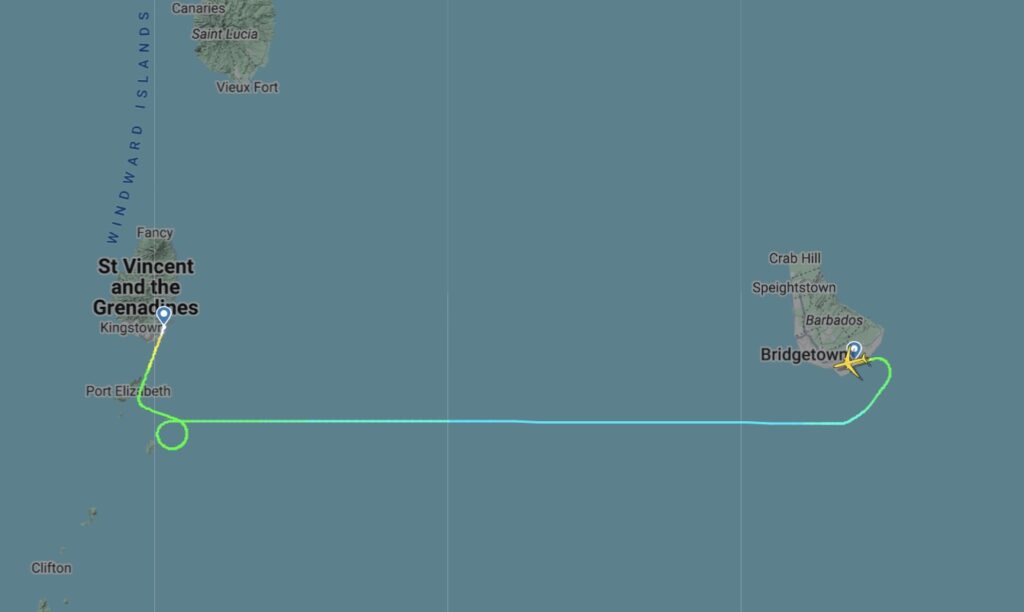
… and hello (following a 1hr transfer to the hotel) to paradise for the next ten days!
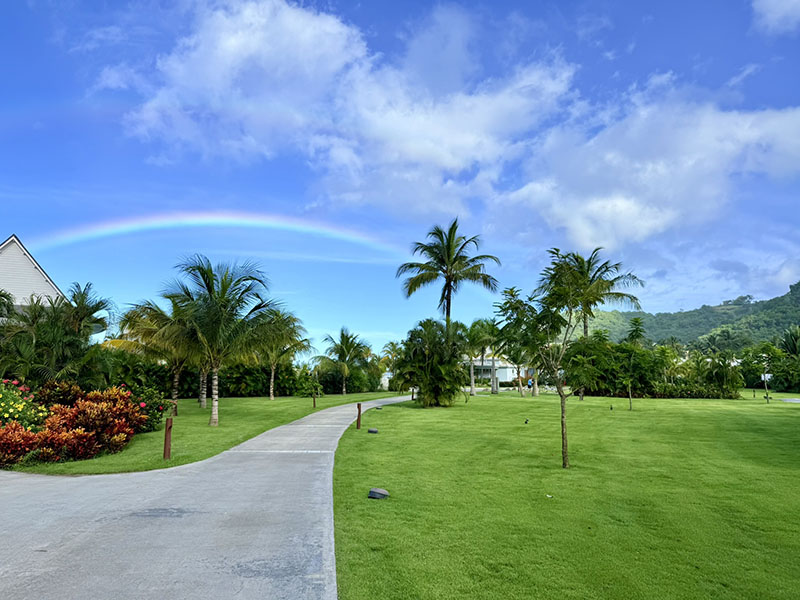
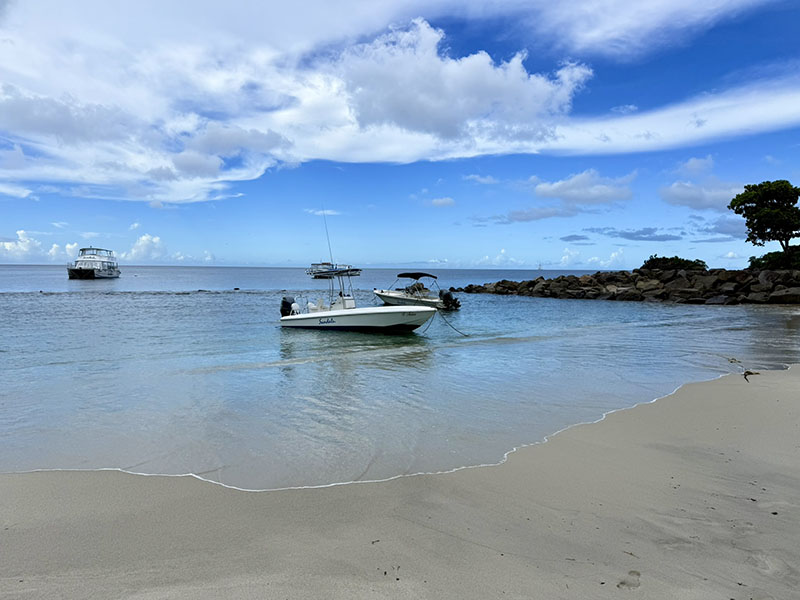
Setting up
Myself and a small [production] team arrived two days earlier to get things set up. The aim of this was to give us a little bit of buffer in case we might have missed anything back at home. Thankfully nothing else was needed from the second team who were coming out (phew).

So this was our home for the next 10 days (5 days of actual broadcasting). An open mezzanine above one of the restaurants that overlooked the ponds, pools and sea.
The first task was roughly placing the equipment at each of the four broadcaster tables. In the first image below you can see some of the ethernet, button module, microphones, XLR’s and headphone amps.
In the second shot, you can see the Yamaha QL1 (still with its cover slightly on); the GPI/O breakout box, and some network switches getting patched up.
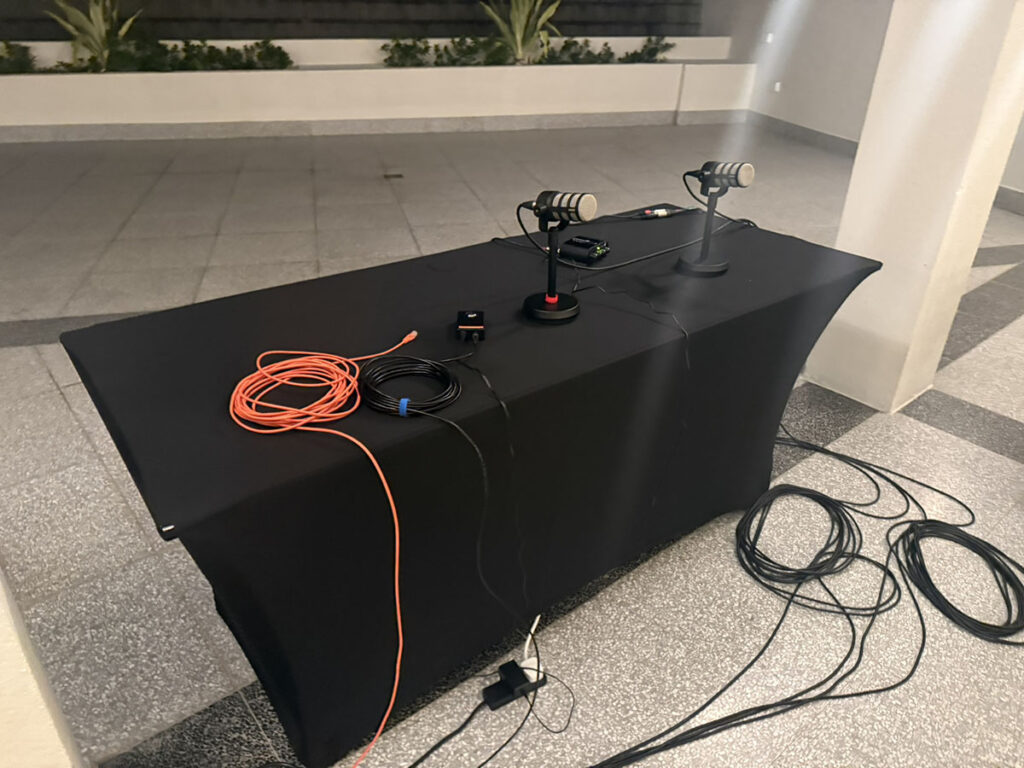
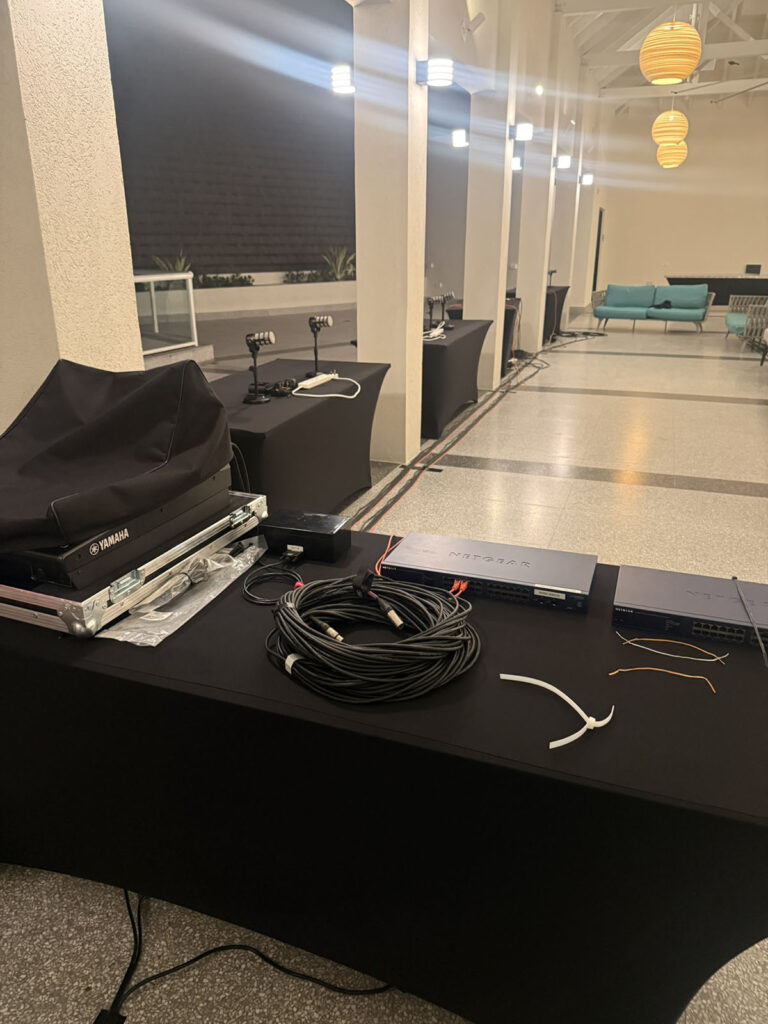
This kind of topology meant I was able to look down the ‘aisle’ in case any broadcaster was experiencing any issues. Broadcaster tables were positioned in a way where every presenter spoke outward toward the view. This ensured less reflections and less broadcasters speaking over each other; considering microphone directionality and pickup patterns.
Cabling masterclass: You can see 4x lanes of cables for each broadcaster. Each lane had the two microphones, a stereo headphone feed, one black ethernet cable for the mute button), another orange ethernet cable for local Dante playback/record; and for two broadcasters who were actually going live, an additional mono xlr cable for the Genelec table speaker.


First day of broadcasting
With all the broadcasters arriving for day one of broadcasts, the first order of business was patching in each broadcaster laptop to the Dante network. For those of you who are not familiar, Dante is an audio over IP technology (AES67 standard) that allows the playback and recording of audio without a physical interface — just an ethernet adapter. In our case, I was able to route the playback of each laptop to each broadcasters mix-bus; and then recording to the laptop via another mix-bus, all patched together using Dante Controller.

kmfm and Radio Exe were the radio stations who were broadcasting live throughout the whole week. My laptop was the dedicated Cleanfeed Pro portal to both station studios; with Cleanfeed set in ‘Music Optimised’ mode, it meant I was able to send and receive stereo content. The input for both studios was set to the Dante auxiliary route from the Yamaha QL1; and the ‘Headphones’ route was set to the Dante route back to the QL1, which fed the headphones and foldback speakers.
We had roughly 150ms of roundtrip delay. Having control over the Cleanfeed connections meant I was able to monitor everything closely for the broadcasters. Another thing less for them to worry about.
Every station opted to broadcast their drivetime show (with some morning presenters swapping places with drive presenters). This was great for every broadcaster as it meant broadcasts began at 11am or 12pm (we were four hours behind the UK); rather than the early hours of the morning.
Isle of Wight Radio/More and Nation Radio voice-tracked to their playout systems, so it meant they could get ahead. Coincidentally, every broadcaster used RCS Zetta.
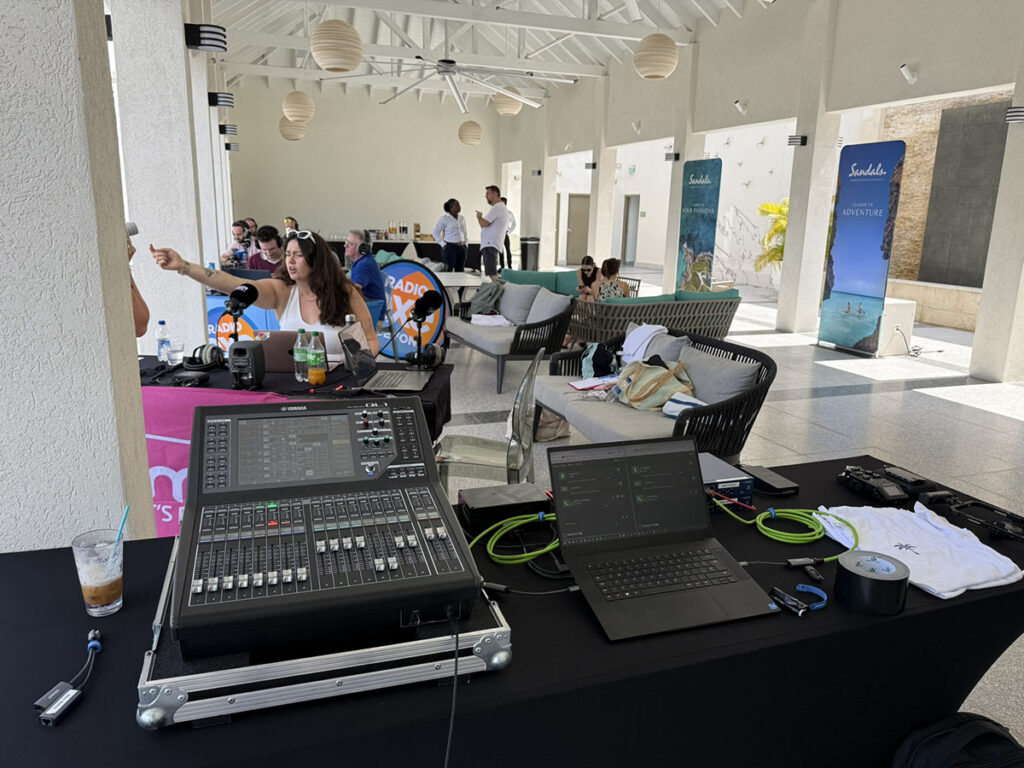
It all paid off
With all the correct planning, cable management etc. It meant the rest of the week went (almost) hitch-free.
We had two small hiccups, which were sadly somewhat unavoidable:
- A power-failure; later revealed to be a car driving into a local transformer (ouch). The on-site generators took about 1 minute to come on. Then a further 1 minute for the QL1 and network switches to start up again. We had the same outage when the mains power came back on and generators turned off.
- A WAN network failure (quickly resolved by moving to WiFI); caused by a confusion of one the on-site firewalls unable to select a primary or secondary route via its fibre optic active-passive balancer.
Fortunately these issues were out of our hands. If we could have opted for it, we’d have ensured a little UPS to keep the network switches up. Weight was a luxury as you know, so I wasn’t ever planning on bringing a UPS on the plane (nor would we have been allowed to).

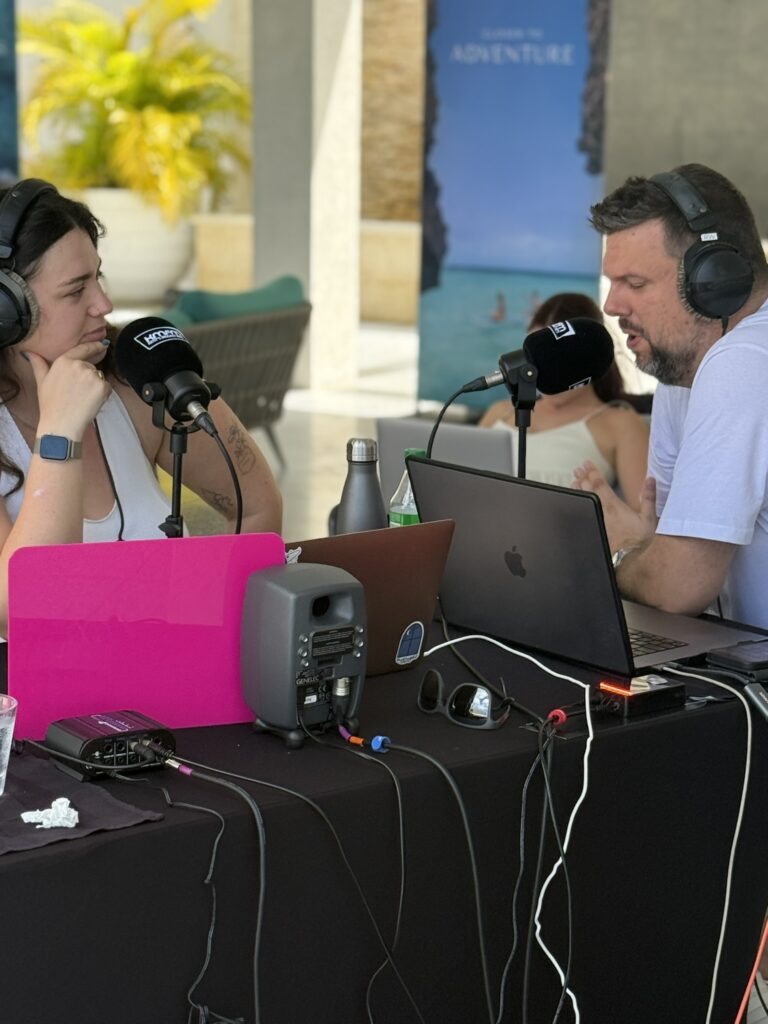
Left image: Steve Power and Neil Greenslade from Nation Radio. Right image: Rob Wills and Numi Gildert from kmfm.
How did it sound?
The week of broadcasting was a success. But, how did it all sound? Well luckily we record things… so here is a taster of two pieces of audio produced by kmfm during the week.
The first: The winner call was made back at the studio via Cleanfeed and the studio telephone system, with Rob and Numi speaking to the caller with a roughly 500ms delay. This obviously wasn’t live to air as the winner calls had to be made well in advance of going on air on the last day. The example below is the remote audio from Saint Vincent back to the UK, mixed with the local caller and recorded with Adobe Audition:
The second: A piece of audio with an interview with the director of the Sandals Foundation, connected all with Cleanfeed (including the interviewee on an iPhone) recorded at the studio in the UK:
But why ‘Broadcasters of the Caribbean’, you ask?
For those eagle eyed spotters, the main image of this post is a set location from Pirates of the Caribbean! Saint Vincent and The Grenadines was one the homes of the main sets from Pirates of the Caribbean: The Curse of the Black Pearl (and others in the movie lineup).
We took a boat trip to the very spot Disney recorded the film back in the early 2000’s. The first shot was an iconic hollowed out rock (the main image of this post is the picture I took) where the hanging skeletons next to the “Pirates Ye Be Warned” sign:

Just around the corner, in Wallilabou Bay, was the town transformed into the fictional port of “Port Royal”. Sets, including the Wallilabou Anchorage Hotel and a customs office, were built for The Curse of the Black Pearl, Dead Man’s Chest, and At World’s End. Some ruins from the sets, including a natural stone arch, are still visible today. Here was one of my shots from the boat:
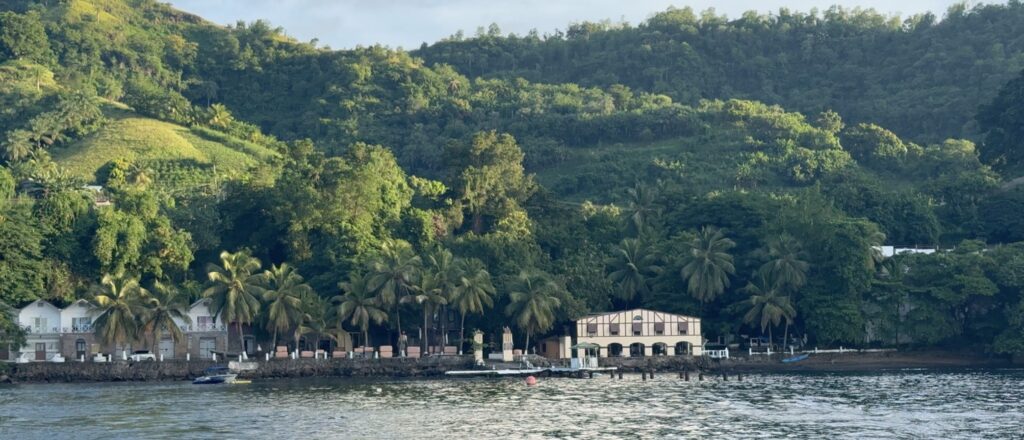
That’s a wrap
We had a great time, and in the end four lucky listeners won a seven night all-inclusive stay at the resort in Saint Vincent and The Grenadines as part of the promotion. We had tens of thousands of entries on the mini-sites. Broadcasters and clients were extremely happy with the outcome.
Cleanfeed played a pivotal part in this whole process, because without it we wouldn’t have been able to seamlessly execute live broadcasts, remotely.
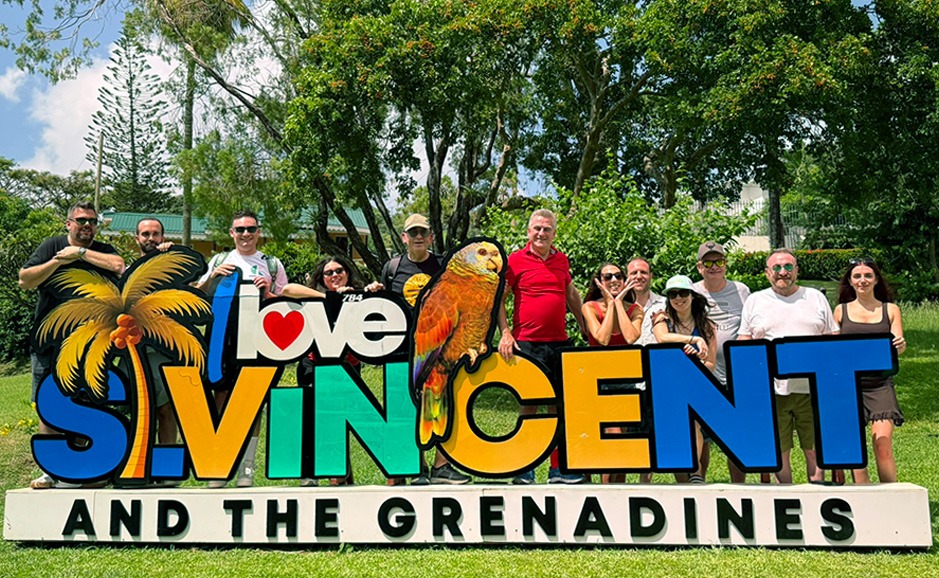
From left to right: Rob Wills (kmfm), Jack McHugh (IOW/More Radio), Ashley Jeary (Radio Exe), Numi Gildert (kmfm), Jason Bryant (Nation Broadcasting), Paul Nero (Radio Exe), Natalie Eales (Unique Vacations (UK) Ltd), Marc Bakos (Cleanfeed), Alice O’Connor (Unique Vacations (UK) Ltd), Neil Greenslade (Nation Radio), Steve Power (Nation Radio) and Becca Webb (kmfm)

Because of the tropical weather, there was no shortage of rainbows throughout the week (great shot, Jason).
… and did we mention drone shots? A story for another day.
